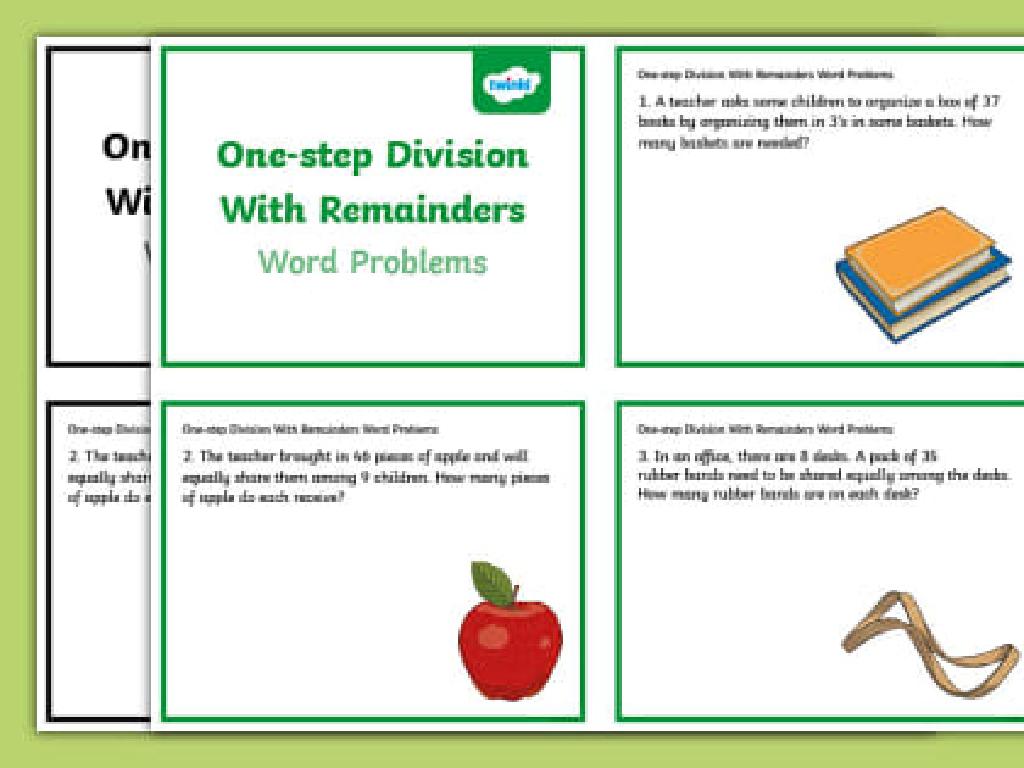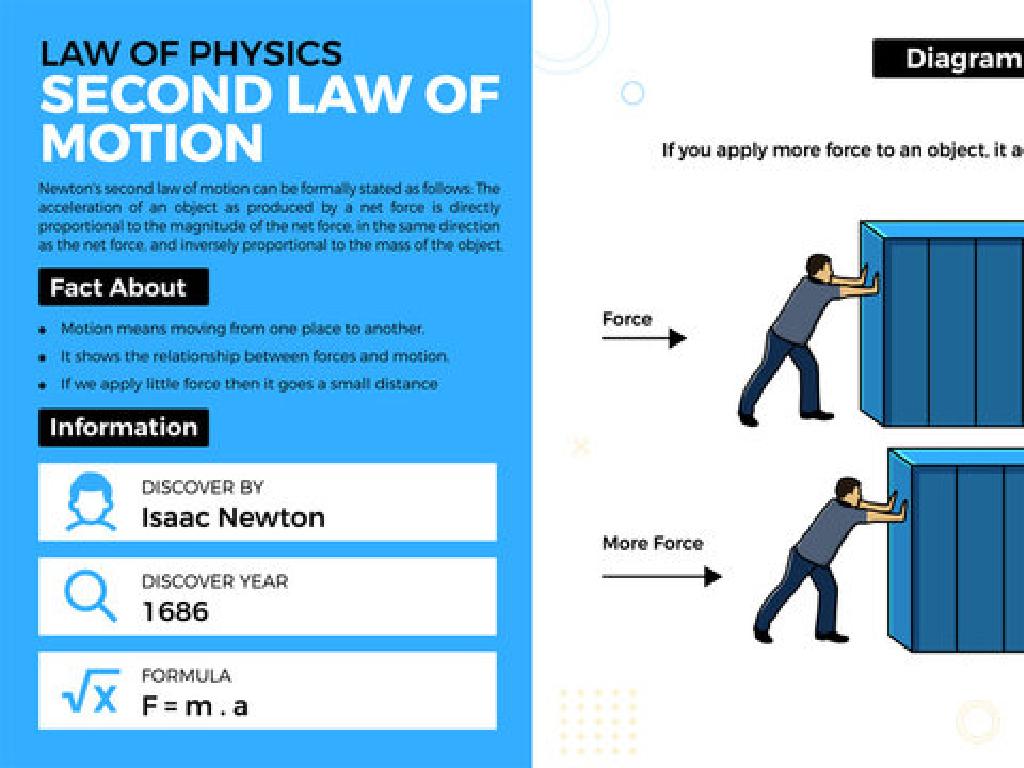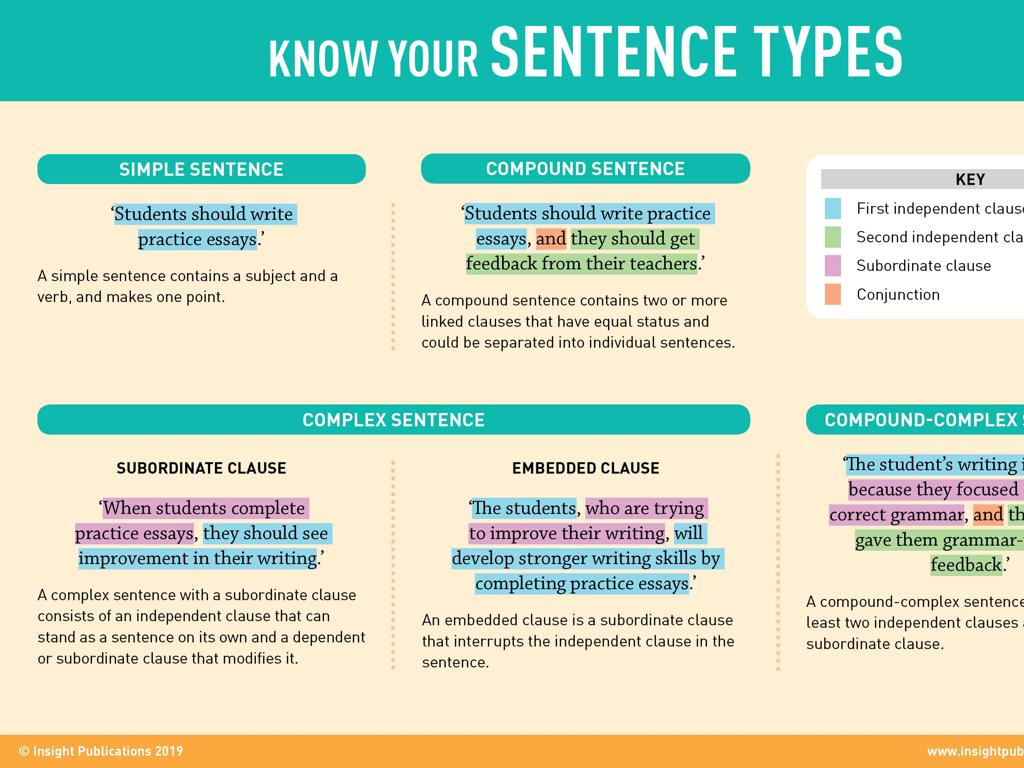Use Data To Describe World Climates
Subject: Science
Grade: Third grade
Topic: Weather And Climate
Please LOG IN to download the presentation. Access is available to registered users only.
View More Content
Welcome to Weather and Climate!
– Explore Earth’s diverse weather
– Learn what climate means
– Climate is the usual weather in a place over a long time
– See how weather/climate impact us
– Weather can change daily, but climate is more constant
– Discuss different world climates
– From what we wear to the food we grow, weather and climate play a big role
|
This slide introduces students to the concepts of weather and climate, setting the stage for understanding how these elements define our world. Begin by explaining that weather is what we experience day-to-day, like rain or sunshine, while climate is the average weather over many years. Emphasize the importance of climate and weather in our daily lives, from choosing our clothes to affecting the crops we grow. Engage the students by discussing the variety of climates around the world and how they shape the living conditions and culture in different regions. Encourage students to think about their local weather and climate and how it affects their own lives.
Exploring Weather Patterns
– Weather: It’s happening now!
– Types of weather: Sunny to Snowy
– Examples: Clear skies or thunderstorms
– Weather changes often
– It can be sunny one moment and rainy the next
– Daily and hourly weather shifts
|
This slide introduces the concept of weather to third-grade students, emphasizing its immediate and ever-changing nature. Begin by explaining that weather is the mix of events that happen each day in our atmosphere including temperature, rainfall, and wind. Give examples of different types of weather such as sunny, rainy, windy, and snowy, and discuss how these conditions can change quickly. Encourage students to observe the weather at different times of the day and to share their observations. This will help them understand the variability of weather and its impact on daily life. Use simple language and relatable examples to ensure comprehension.
Exploring World Climates
– What is climate?
– Climate: typical weather in a place over years
– Climate varies globally
– Some areas are hot, others cold or rainy
– Types of climates
– Tropical: warm and rainy; Desert: dry and hot; Polar: very cold; Temperate: mild seasons
– Climate affects daily life
|
This slide introduces the concept of climate to third-grade students, explaining that climate is the average weather conditions experienced in a region over a long period. Emphasize that different regions around the world experience distinct climates, such as tropical, desert, polar, and temperate. Each climate has unique characteristics that influence the way people live, the types of houses they build, and the clothes they wear. Use relatable examples like comparing the hot, humid climate of a rainforest to the cold, icy conditions of the polar regions. Encourage students to think about how different climates might affect their own lives if they were to live in those regions.
Understanding Weather Through Data
– Scientists gather daily weather data
– They use tools like thermometers and rain gauges
– Weather data includes temperature, rain, and wind
– Temperature is how hot or cold, rainfall is the water that falls, wind speed is how fast the air moves
– Data reveals patterns in weather
– Looking at data over time shows us what weather is like in different seasons
– Predicting weather using data
|
This slide introduces students to the concept of collecting weather data and how it helps us understand climate patterns. Emphasize the role of scientists in gathering this information daily using various tools. Explain that temperature measures heat, rainfall is measured in inches or millimeters, and wind speed is how fast the wind is blowing. Discuss how this data helps us see patterns, like which months are hotter or rainier, and how these patterns help us predict future weather. Encourage students to think about how the weather changes throughout the year in their own city or state.
Exploring World Climates
– Climates: Hot, Cold, Wet, Dry
– Tropical climates: Hot and Wet
– Examples: Rainforests near the equator
– Desert climates: Hot and Dry
– Examples: Sahara and Mojave deserts
– How climate affects daily life
– Clothes we wear, food we eat
|
This slide introduces students to the concept of different climates around the world. Start by explaining that climate describes the average weather conditions in a place over a long period of time. Emphasize the four main types of climates: hot, cold, wet, and dry. Use tropical climates as an example of hot and wet environments, mentioning rainforests as a typical ecosystem. For hot and dry climates, refer to deserts like the Sahara in Africa or the Mojave in North America. Discuss with students how these climates influence the way people live, including the types of clothes they wear and the food they eat. Encourage students to think about their own climate and how it affects their daily activities.
Describing Climates Using Data
– Climate defined by long-term patterns
– Common climate characteristics
– Is the place often hot, cold, wet, or dry?
– Analyzing climate data
– We’ll review weather data charts and graphs
– Examples of climate data
– Look at different places: a desert, a rainforest, the Arctic
|
This slide introduces the concept of climate as a pattern of weather over a long period. It’s important to explain to students that while weather can change day-to-day, climate is what we expect over time. Discuss the typical characteristics used to describe climate, such as temperature and precipitation. Use visual aids like charts and graphs to help students understand how data is used to describe different climates. Provide examples of climates from various regions, such as the consistent heat in a desert, the high rainfall in a rainforest, and the cold temperatures in the Arctic. Encourage students to think about what kind of climate they live in and what data would support that description.
Climate Detectives: Group Activity
– Work in groups on weather data
– Describe a world region’s climate
– Is it mostly hot, cold, wet, or dry?
– Present your climate findings
– Use charts and pictures in presentation
– Learn about different climates
– Understand how climate varies globally
|
This activity is designed to engage students in collaborative learning about world climates. Divide the class into small groups and assign each group a different region of the world. Provide them with weather data such as temperature, rainfall, and wind patterns. Guide them to analyze the data to describe the climate of their assigned region. Encourage them to use visual aids like charts or pictures in their presentations. This will help them understand the concept of climate and how it differs from weather. It’s also a great opportunity for them to practice their presentation skills. Possible variations of the activity could include creating posters, writing a weather report, or even acting out a weather forecast.
Understanding Weather and Climate
– Weather vs. Climate
– Weather changes daily, climate is the average over years.
– Data’s role in climate
– We use temperature and rainfall data to learn about climate zones.
– Climates guide preparation
– Knowing a place’s climate helps us plan what to wear and do.
– Review: Weather and Climate
|
This slide concludes our lesson on weather and climate. It’s crucial to emphasize the difference between weather, which can change from day to day, and climate, which is the average of weather over a long period. Highlight how scientists use data like temperature and rainfall to describe the climate of different places around the world. Understanding these concepts helps us prepare for our daily activities, such as choosing appropriate clothing or planning outdoor events. Encourage students to think about their local climate and how it affects their daily lives. Review the key points to ensure students can distinguish between weather and climate and understand the importance of climate data.






